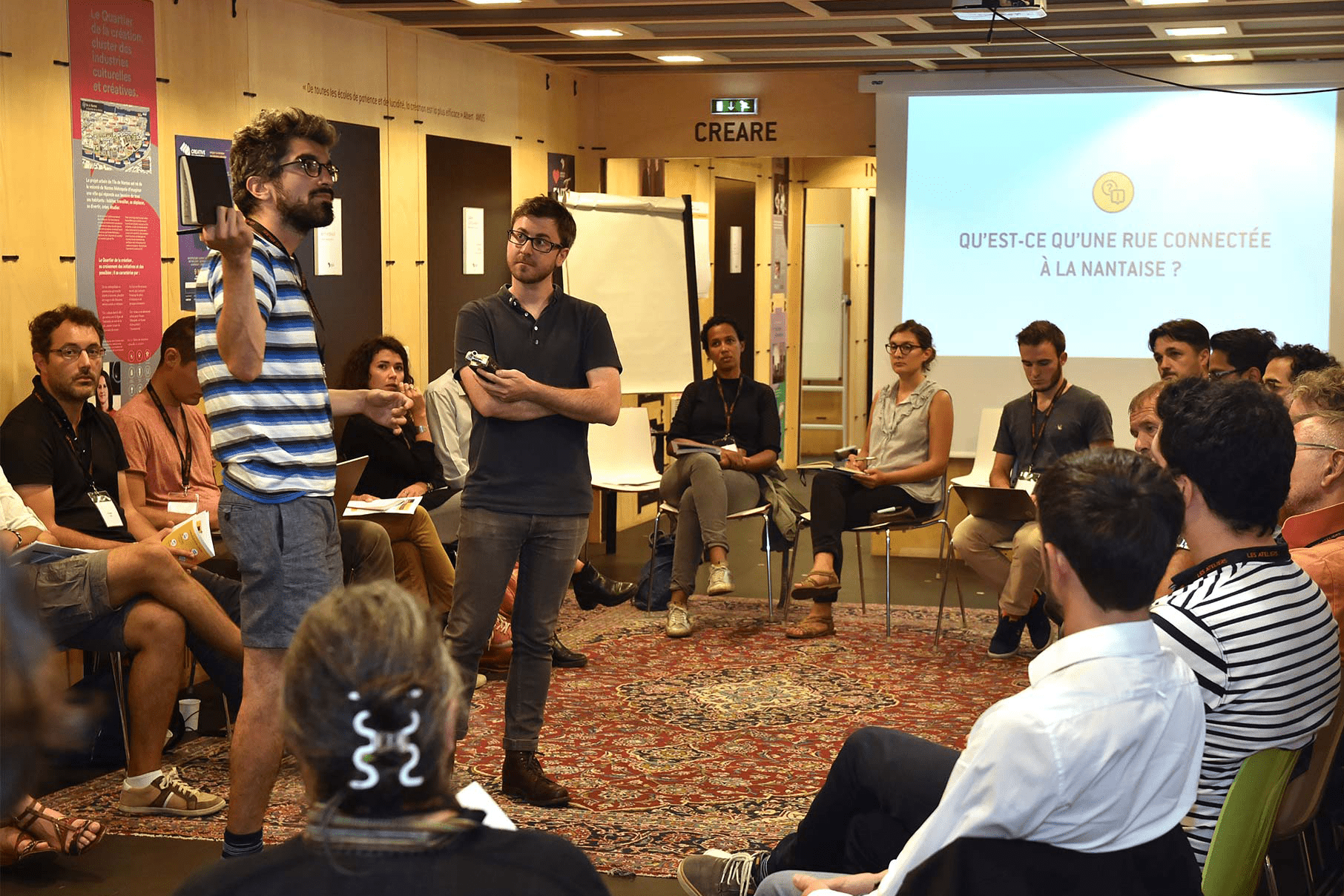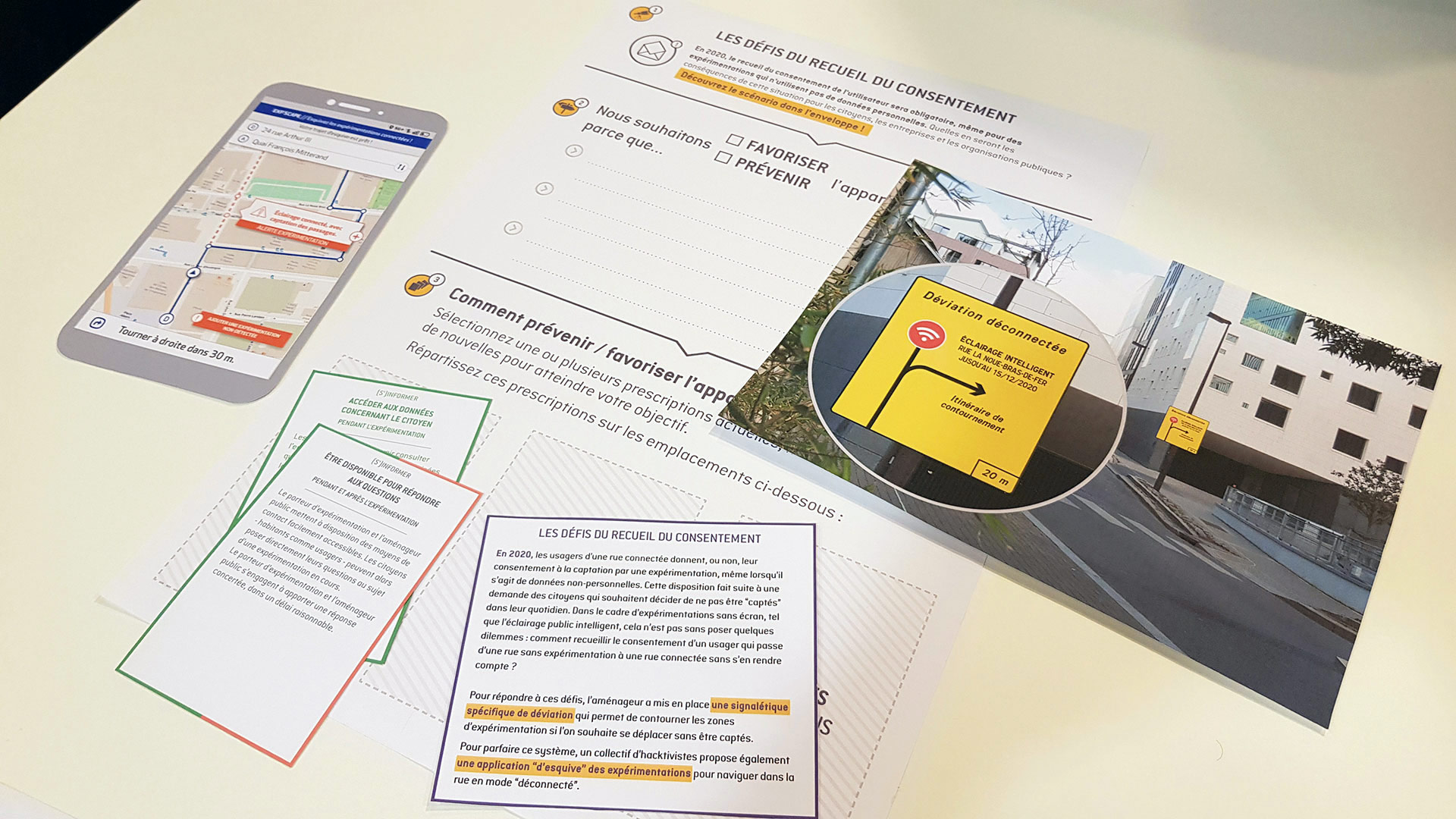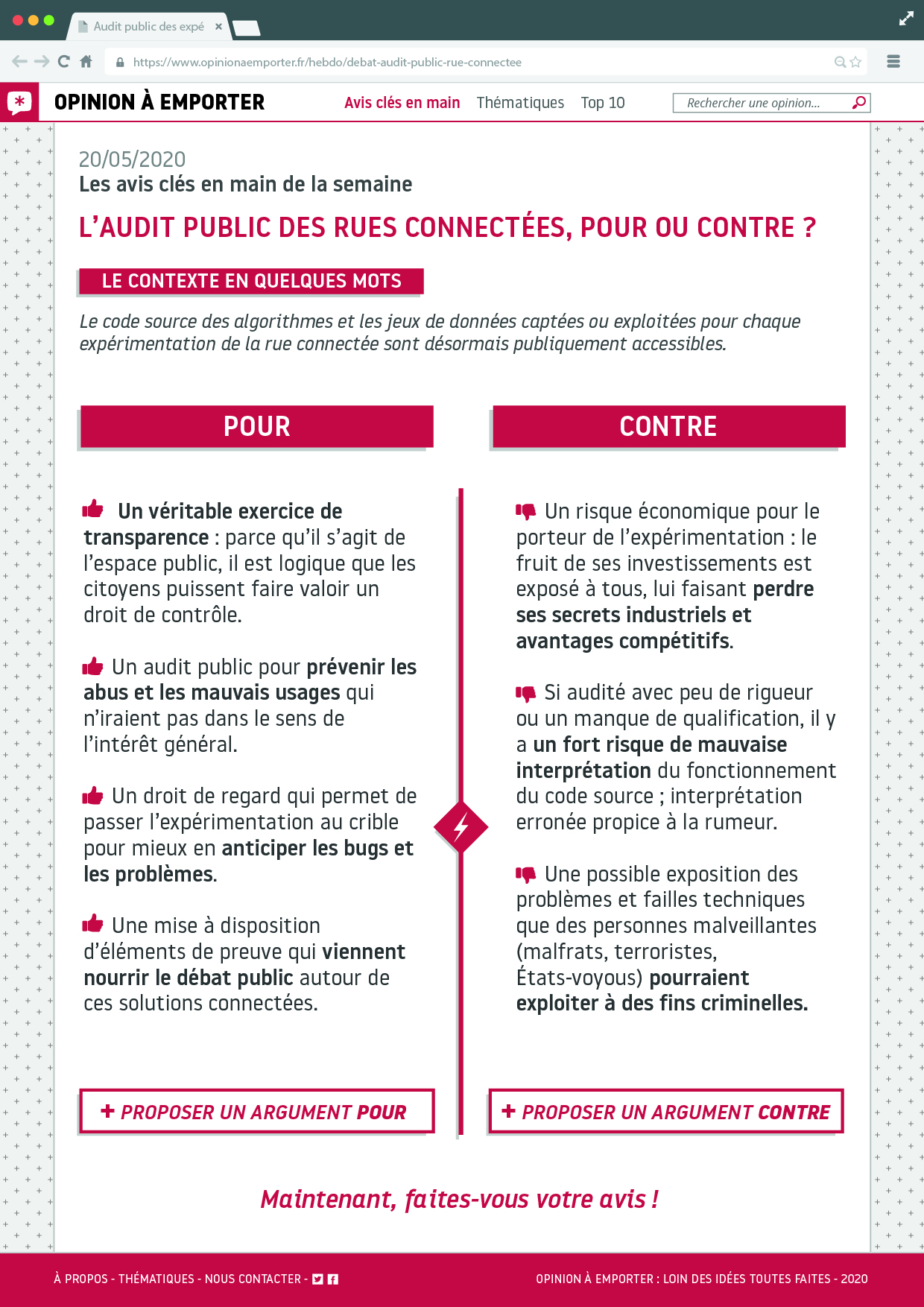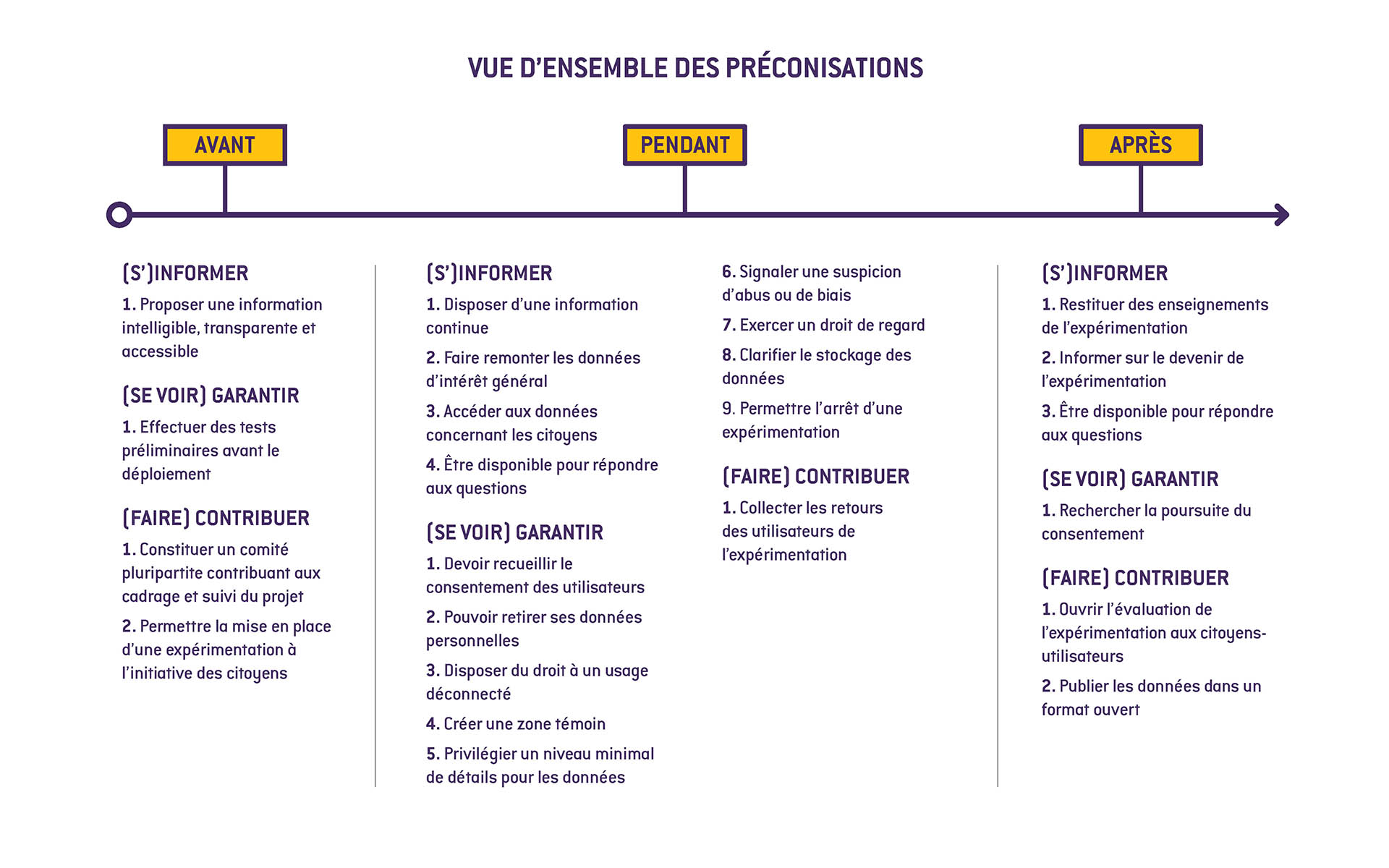
The rules of the smart street
Using Design Fiction to future-proof and enhance citizens’ contributions
How can we create a framework of trust to experiment with connected street in the heart of the city?
The Société d’Aménagement de la Métropole Ouest Atlantique (Samoa) took the bold step of entrusting this reflection to those most affected: the inhabitants and users. A workshop, inviting citizens for several sessions, was launched to collectively define a series of recommendations aimed at supporting the experimentation of new technologies and innovative uses in the connected public space of the Île de Nantes (France).
We worked alongside the Groupe Chronos to design the methodology of these workshop sessions, with the aim of producing a charter for urban planners, experimenters, and resident-users alike. These ‘rules of the connected street’ specifically focused on the regulation of personal data use in new urban services.
The third and final phase of this approach involved a future-oriented crash-test of the citizens’ recommendations, using the Design Fiction approach for future-proofing. Four scenarios were developed to highlight the blind spots, implications, and overlooked aspects of various rules outlined in the citizen-drafted charter.

↑ A first workshop session to outline the contours of a ‘Nantes-style’ connected street, exploring urban data issues and building a shared understanding of its challenges.
By projecting five years after the charter’s implementation, the fictional scenarios and their speculative artefacts prompted participants to consider emerging uses and side effects:
- How are AI systems integrated into urban infrastructure?
- What challenges arise for obtaining user consent on the street?
- What might a public audit of connected urban solutions look like?
In response, the panel of residents and users debated each scenario, then amended the charter’s rules to better prevent or support these new uses and side effects. Following this future-proofing phase, in collaboration with Chronos experts, we synthesised adapted citizen recommendations for various smart street use cases and experiments, thus moving from fiction to action.
This methodology of prospective and critical evaluation demonstrates how Design Fiction can be embedded in a broader process of collaborative innovation. Indeed, a future-proofing crash-test through Design Fiction helps to assess the robustness of a public policy, service, or product in the face of future uncertainties, before it is rolled out on a large scale.

↑ One of the design fiction scenarios crash-testing the challenges of obtaining consent for data capture in a smart street, from disconnected diversions to urban navigation apps helping avoid city sensors.

↑ What if a public audit allowed scrutiny of the algorithms and data used in connected street experiments?

↑ An overview of the final version of the citizens’ recommendations, following the futures crash-test.
For further reading
